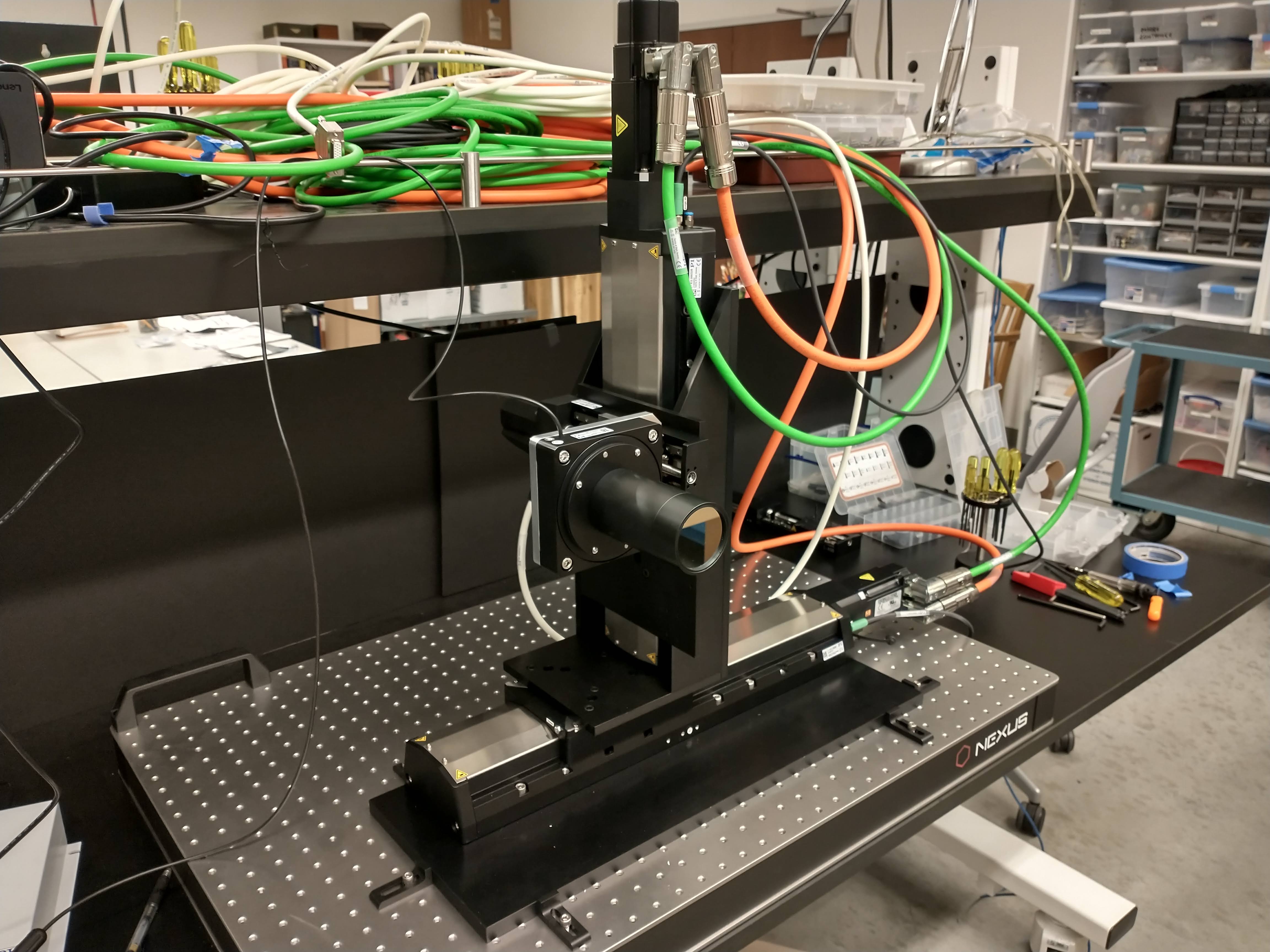...
Doing distortion calibrations in this way has lots of advantages. We know the exact positions of the ‘stars’ in the grid, we can use a nice bright back light, and we can do it during the day, without using up nightime hours.
The pinhole mask needs to be at a focal point of the telescope, which is about 10 cm inside the K-rotator (which rotates the field of view to put north at the top). To get the pinhole mask there, it is mounted on a set of 3 linear stages, allowing it to move in X, Y, and Z. There’s also a rotation stage, which can rotate the pinholes to do calibrations.
The PCU also mounts other equipment. It includes a fibre bundle, which can also be inserted to the focal position. The optical fibres are connected to the asterism simulator - it sends light through the fibres to simulate the natural and artificial guide stars used in adaptive optics.
Additionally, there are mirrors attached to the PCU to direct light from the telescope simulator into the imager, or to send light from the telescopet to the KPF fibre injection unit. The linear stages can move to bring any of these components into the optical path, or to stow them to the side for observing.
...
